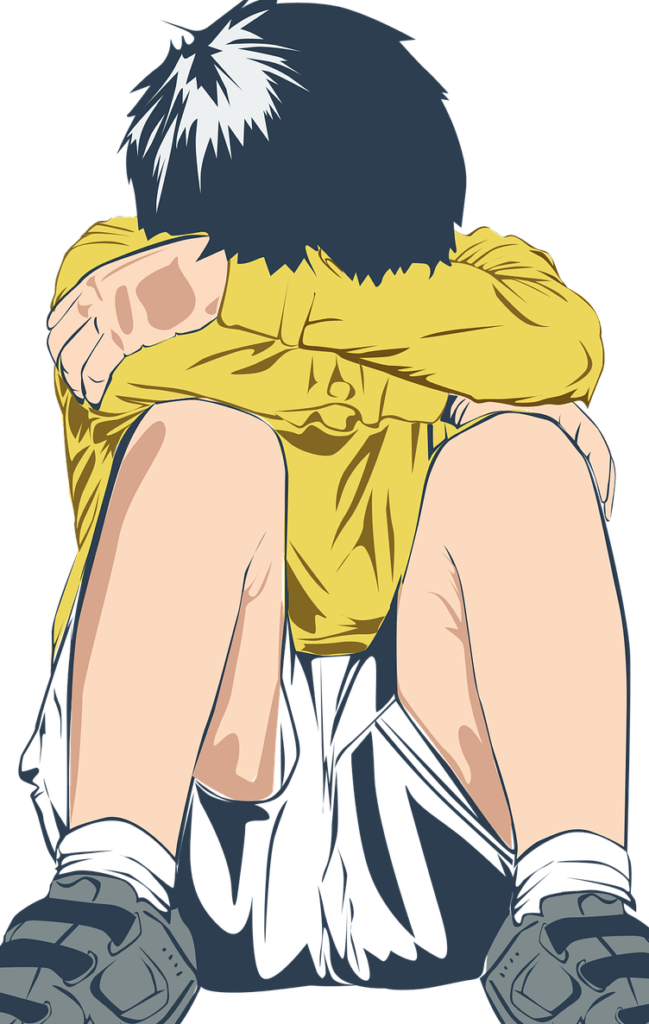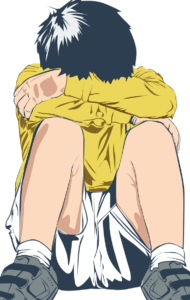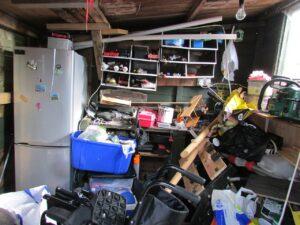Guest post by Gayle Pape, LCSW
Something upsetting happens and your child worries that it might happen again. You talk it over with your child and they bounce back. This cycle is a natural part of a child’s life as they grow and experience new things. However, when your child’s feelings of anxiety cause extreme fear and worry, continue over time, and begin to generalize beyond specific circumstances, it might be an anxiety disorder.
Childhood anxiety at this level can prevent children from doing things like going to school, seeing friends, or going to social events, and can affect a child’s mood, sleep, and eating patterns.
Childhood anxiety affects one in every eight children. There are different types of anxiety disorders, and many symptoms overlap. Common outward signs that a child may have an anxiety disorder are:
- Trouble sleeping
- Stomachaches or complaints of other physical problems
- Avoiding certain situations
- Trouble concentrating or being very fidgety
- Explosive outbursts or tantrums
- Clinginess around parents or caregivers
- Being very self-conscious
I usually see fidgety behaviors such as nail biting, inability to focus on one thing at a time, high distractibility, or extreme clinginess when with a parent.
What causes child anxiety disorders?
Several factors play a role in causing the overreactive “fight, flight, freeze or fawn” responses that happen with child anxiety disorders. They include:
Genetics: Many children inherit genes from family members with anxiety disorders.
Brain chemistry: Genes help direct the way brain chemicals called neurotransmitters work. Anxiety may be caused by either having a short supply of brain chemicals or they may not be working well.
Life situations: The stresses of experiencing serious loss, death of a loved one, violence, abuse, or other traumas can lead to childhood anxiety disorders.
Learned behaviors: Growing up in a family where anxious and fearful behaviors are modeled can create anxious children.
Related Reading: Can Childhood Trauma Cause Anxiety? Yes and Here’s Why
Types of Anxiety disorders
Children can be diagnosed with different types of Anxiety Disorders depending on the symptoms they’re displaying.
Generalized Anxiety Disorder: This is continuous worry about everyday things that parents might not expect would cause worry. They also worry more often than same-age peers, which in turn, impairs daily functioning.
Separation Anxiety Disorder: This type of anxiety is characterized by extreme distress when away from parents or caregivers – beyond what is normally felt by same-age children.
Social Anxiety Disorder: This type is connected with extreme self-consciousness around others and is often marked by avoidance of social situations and speaking in class.
Selective Mutism: This is an extreme anxiety – the child feels frozen and unable to speak in certain situations like school.
Panic Disorder: This type of anxiety disorder is marked by extreme, unexpected panic attacks that cause distressing physical sensations resulting in avoidance of places where attacks have happened.
Obsessive Compulsive Disorder: In this type of anxiety disorder, obsessions, or unwanted thoughts/worries cause anxiety, which, in turn, drives the development of compulsions, or rules that must be followed to control anxious feelings.
Specific Phobias: This type of anxiety disorder is marked by fear of specific things that are not normally considered dangerous, resulting in extreme avoidance of everyday events.
What does Untreated Anxiety look like in a child?
Children who are called shy, self-conscious, worried, and/or afraid may, in reality, be experiencing untreated anxiety. Poor coping skills, poor academic functioning, lower self-esteem, and self-medication with substances are some other symptoms of untreated anxiety in children. You may also notice avoidance behavior since children tend to avoid things that make them anxious. Unfortunately, this behavior reinforces their anxiety instead of learning to move through the uncomfortable feelings.
Related Reading: How to Teach Your Child to Cope with Anxiety
Treatment for childhood anxiety
How do you reduce childhood anxiety? The main treatment for childhood anxiety is psychotherapy. So, what does a child psychotherapy session for anxiety look like? I usually invite the child to look around and get familiar with or re-familiarize themselves with the room. I use slow movements, a comforting tone, and humor when appropriate. We practice breathing techniques or yoga poses to calm their nervous systems at the beginning or throughout our sessions. I also validate their anxiety and let them know what we will be doing during the session. In addition, I validate fears and work on changing negative thoughts to positive affirmations.
Additionally, I may use techniques from specific types of therapy.
CBT (Cognitive Behavioral Therapy):
CBT teaches kids that what they think and do affects how they feel. It helps children learn coping skills to reduce and face their fears and worry less.
EMDR (Eye Movement Desensitization and Reprocessing):
This type of therapy helps by causing negative memories to become less painful, negative thoughts to become less potent, and positive thoughts to become more powerful.
EMDR can help with specific anxieties (about school, social situations, separation difficulties, etc.) or specific depressors (grief, bullying, constant stress, etc.), but it can also help with more general anxiety, as well.
Medication:
The child therapist may also work in collaboration with the child’s pediatrician if the anxiety signs and symptoms suggest that a medication evaluation is in order. The doctor can prescribe medication or may refer to a specialist, such as a child and adolescent psychiatrist.
If you think your child might have childhood anxiety, help is a phone call away. Please reach out to us in our Northern Illinois locations in Glen Ellyn, Chicago (Jefferson Park), Sycamore, or Yorkville. Our therapists can see clients either in-person or via telehealth.
Gayle Pape has 23 years of experience working with children and adolescents. She uses a strength-based approach and provides a safe space to assist in the processes of empowerment, healing, and growth. Her therapeutic approaches include Cognitive Behavioral Therapy (CBT), Eye Movement Desensitization and Reprocessing (EMDR), Mindfulness-Based Therapy, Strength-Based Therapy, Solution Focused Therapy, Art Therapy, and Play Therapy. She sees clients in the Glen Ellyn office.






